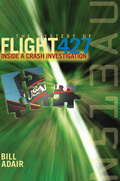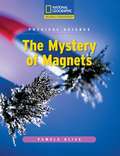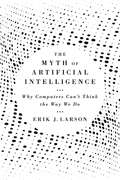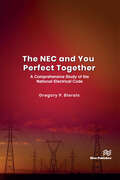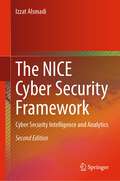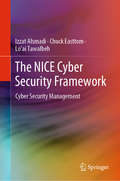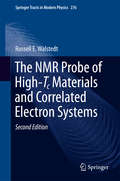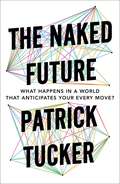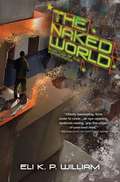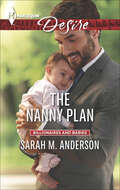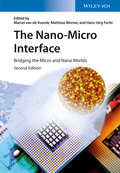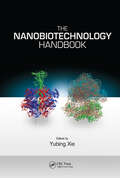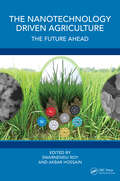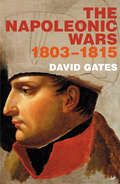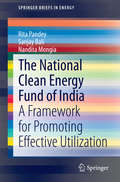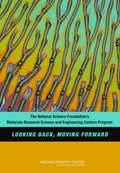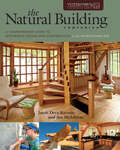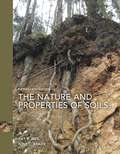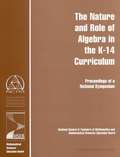- Table View
- List View
The Mysterious Mr. Nakamoto: A Fifteen-Year Quest to Unmask the Secret Genius Behind Crypto
by Benjamin WallaceA thrilling investigation into the mysterious identity of Bitcoin&’s creator and a deep dive into crypto&’s utopian origin story—from The New York Times bestselling author of The Billionaire&’s Vinegar&“Could be the best mystery story of the past twenty years.&”—James Patterson &“The Mysterious Mr. Nakamoto will leave you amazed, enlightened, and utterly breathless.&”—Robert Kolker, #1 New York Times bestselling author of Hidden Valley RoadIn October 2008, someone going by the name Satoshi Nakamoto posted a white paper outlining &“a peer-to-peer electronic cash system&” called Bitcoin to an arcane listserv populated by Cypherpunks. No one in the community had heard of Nakamoto, and just as people were starting to wonder who he was, he vanished. As the years passed, and the scope of Nakamoto&’s achievement became clear, the truth of his identity grew into the greatest unsolved mystery of our time.The Mysterious Mr. Nakamoto traces Benjamin Wallace&’s attempt to unmask the figure behind the currency and the world it wrought. Nakamoto&’s Bitcoin at first seemed destined to fulfill the dreams of fringe 1990s utopians for a currency set free from governments and big banks. Yet after he disappeared, his creation took on a strange new life in the financial markets, where rampant speculation fueled a vision of crypto as a potential windfall, inviting charlatans and scammers and opening a vast gulf between Bitcoin&’s idealistic origins and its troubled reputation.But who was Nakamoto? Whoever he was could rightly claim to have invented one of the most important technologies of the new century. And Nakamoto was a billionaire—his Bitcoin wallet held an untouched eleven-figure fortune waiting to be claimed.With the same propulsive-narrative flair that made his New York Times bestseller The Billionaire&’s Vinegar an instant success, Benjamin Wallace presents a page-turning work of investigative journalism. Tracking leads from London to Oslo to Los Angeles, from coastal Australia to the Arizona desert, he takes readers through a rogues&’ gallery tour of Nakamoto suspects—from benevolent geniuses like cryptographer Hal Finney to difficult ones like a reclusive polymath known to his followers only as Jim; from the mercurial Australian Craig Wright, who claims to be Nakamoto, to a secret team at the National Security Agency. With the forensic skill of Sherlock Holmes and the storytelling verve of Arthur Conan Doyle, Wallace follows the trail of computer code and personal writings to the heart of the Nakamoto mystery while interrogating the very nature of mystery itself.
The Mystery of Flight 427
by Bill AdairThe immediate human toll of the 1994 Flight 427 disaster was staggering: all 132 people aboard died on a Pennsylvania hillside. The subsequent investigation was a maze of politics, bizarre theories, and shrouded answers. Bill Adair, an award-winning journalist, was granted special access to the five-year inquiry by the National Transportation Safety Board (NTSB) while its investigators tried to determine if the world's most widely used commercial jet, the Boeing 737, was really safe. Their findings have had wide-ranging effects on the airline industry, pilots, and even passangers. Adair takes readers behind the scenes to show who makes decisions about airline safety--and why.
The Mystery of Magnets
by Pamela BlissDescribes how magnets act on objects and other magnets. Explains how Earth is a magnet. Identifies historical discoveries about magnetism. Explores the relationship between electricity and magnetism.
The Mystery of the Aleph
by Amir D. AczelThe history of infinity emphasizing the people who were interested in the concept. Stresses philosophical and religious importance of mathematical ideas throughout history. Fascinating even if math is not your strong suit.
The Mystery of the Black Hole Mine (D. J. Dillon Adventure #7)
by Lee RoddyD.J. gets a bad case of "gold fever" when he and Alfred accidentally discover an abandoned-- and mysteriously dangerous-- gold mine.
The Myth of Artificial Intelligence: Why Computers Can't Think the Way We Do
by Erik J. Larson“Artificial intelligence has always inspired outlandish visions—that AI is going to destroy us, save us, or at the very least radically transform us. Erik Larson exposes the vast gap between the actual science underlying AI and the dramatic claims being made for it. This is a timely, important, and even essential book.” —John Horgan, author of The End of Science Many futurists insist that AI will soon achieve human levels of intelligence. From there, it will quickly eclipse the most gifted human mind. The Myth of Artificial Intelligence argues that such claims are just that: myths. We are not on the path to developing truly intelligent machines. We don’t even know where that path might be. Erik Larson charts a journey through the landscape of AI, from Alan Turing’s early work to today’s dominant models of machine learning. Since the beginning, AI researchers and enthusiasts have equated the reasoning approaches of AI with those of human intelligence. But this is a profound mistake. Even cutting-edge AI looks nothing like human intelligence. Modern AI is based on inductive reasoning: computers make statistical correlations to determine which answer is likely to be right, allowing software to, say, detect a particular face in an image. But human reasoning is entirely different. Humans do not correlate data sets; we make conjectures sensitive to context—the best guess, given our observations and what we already know about the world. We haven’t a clue how to program this kind of reasoning, known as abduction. Yet it is the heart of common sense. Larson argues that all this AI hype is bad science and bad for science. A culture of invention thrives on exploring unknowns, not overselling existing methods. Inductive AI will continue to improve at narrow tasks, but if we are to make real progress, we must abandon futuristic talk and learn to better appreciate the only true intelligence we know—our own.
The NEC and You Perfect Together: A Comprehensive Study of the National Electrical Code
by Gregory P. BieralsThis book uses a unique approach of identifying the terms defined in NEC Article 100 and connecting these definitions to the appropriate sections in Chapters 1 through 9, with detailed explanations that will serve to enhance the reader’s understanding of this complex subject. This volume contains extensive information on the following: Branch Circuits Feeders Services Overcurrent Protection Grounding Systems and Equipment Bonding Impedance Grounded Systems Separately Derived Systems Functional Grounding Calculating Ground-Fault Currents Motors, Motor Circuits, and Controllers Transformers Health Care Facilities Hazardous (Classified) Locations Information Technology Equipment Emergency Systems Tables and Examples Readership: Anyone involved in the design and installation of the electrical systems in residential, commercial, institutional, and industrial facilities.
The NICE Cyber Security Framework: Cyber Security Intelligence and Analytics
by Izzat AlsmadiThis updated textbook is for courses in cyber security education that follow the National Initiative for Cybersecurity Education (NICE) framework which adopts the Competency- Based Education (CBE) method. The book creates content based on the Knowledge, Skills and Abilities (a.k.a. KSAs) described in the NICE framework. This book focuses on cyber analytics and intelligence areas. The book has 18 chapters: Introduction, Acquisition Management, Continuity Planning and Disaster Recovery, Cyber Defense Analysis and Support, Cyber Intelligence, Cyber Intelligence Analysis, Cyber Operational Planning, Cyber Policy and Strategy Management, Cyber Threat Analysis, Cybersecurity Management, Forensics Analysis, Identity Management, Incident Response, Collection Operations, Computer Network Defense, Data Analysis, Threat Analysis and last chapter, Vulnerability Assessment.
The NICE Cyber Security Framework: Cyber Security Management
by Chuck Easttom Izzat Alsmadi Lo’ai TawalbehThis textbook covers security controls and management. It is for courses in cyber security education that follow National Initiative for Cybersecurity Education (NICE) work roles and framework that adopt the Competency-Based Education (CBE) method. The book follows the CBE general framework, meaning each chapter contains three sections, knowledge and questions, and skills/labs for skills and sbilities. The author makes an explicit balance between knowledge and skills material in information security, giving readers immediate applicable skills. The book is divided into several parts, including: Information Assurance / Encryption; Information Systems Security Management; Information Systems / Network Security; Information Technology Management; IT Management; and IT Risk Management.
The NMR Probe of High-Tc Materials and Correlated Electron Systems
by Russell E. WalstedtThis new edition updates readers in three areas of NMR studies, namely, recent developments in high-Tc materials, heavy fermion systems and actinide oxides are presented. The NMR probe has yielded a vast array of data for solid state materials, corresponding to different compounds, ionic sites, and nuclear species, as well as to a wide variety of experimental conditions. The last two parts of the book are completely new in this edition, while the first part has seen major updates.This edition features the latest developments for high-Tc materials, especially the advances in the area of pseudogap studies are reviewed. An in depth overview of heavy fermion systems is presented in the second part, notably Kondo lattices, quantum critical points and unconventional superconductivity are areas of intense research recently and are covered extensively. Finally, valuable information from NMR studies with actinide oxides will be provided.Ongoing analysis and discussion of NMR data have resulted in a wealth of important insights into the physics of these exotic systems. The aims of this monograph are manyfold. First, it reviews NMR methodology as it has been applied to the different studies. This is addressed to NMR practitioners and to physics laypersons alike. Next, it presents a review of NMR measurements and the wide variety of phenomena which they represent. The third phase is to recount the theoretical model calculations and other proposals which have been put forward to account for these data.
The Naked Android: Synthetic Socialness and the Human Gaze (Chapman & Hall/CRC Artificial Intelligence and Robotics Series)
by Julie CarpenterThe Naked Android: Synthetic Socialness and the Human Gaze illuminates the connection between the stories people tell, their expectations of what a robot is, and how these beliefs and values manifest in how real robots are designed and used.The introduction of the “human gaze” articulates how peoples’ expectations and perceptions about robots are ultimately based on deeply personal cultural interpretations of what is artificial or human and what problems social robots should –or should not –solve. The Naked Android clarifies how human qualities like understanding and desire are designed into robots as mediums as well as projected onto them by the people who live with them.By investigating the fluidity of identities across human culture and social robotics, this book unpacks the contextual complexities of their interactions and mutual influences. Using ethnographic methods including in-depth interviews with a variety of stakeholders, each chapter explores how people are designing social robots, the experience of living with robots, and people whose jobs it is to dream about a future integrated with robots.Key Features: Introduces the concept of the “human gaze” (and the “robot gaze”) as means of understanding how people live with robots. Each chapter includes in-depth interviews with people who make, live with, or create art about robots. Using ethnographic methods, paints a vivid description of the interconnecting influences of science fiction, human imagination, and real technology.
The Naked Future
by Patrick TuckerIn the past, the future was opaque--the territory of fortune-tellers, gurus, and dubious local TV weathermen. But thanks to recent advances in computing and the reams of data we create through smartphone and Internet use, prediction models for individual behavior grow smarter and more sophisticated by the day. Whom you should marry, whether you'll commit a crime or fall victim to one, if you'll contract a specific strain of flu--even your precise location at any given moment years into the future--are becoming easily accessible facts. the naked future is upon us, and the implications are staggering. Patrick Tucker draws on stories from health care to urban planning to online dating to reveal the shape of a future that's ever more certain. In these pages you'll meet scientists and inventors who can predict your behavior based on your friends' Twitter updates. They are also hacking the New York City sewer system to predict environmental conditions, anticipating how much the weather a year from now will cost an individual farmer, figuring out the time of day you're most likely to slip back into a bad habit, and guessing how well you'll do on a test before you take it. You'll learn how social networks like Facebook are using your data to turn you into an advertisement and why the winning formula for a blockbuster movie is more predictable than ever. The rise of big data and predictive analytics means that governments and corporations are becoming much more effective at accomplishing their goals and at much less cost. Tucker knows that's not always a good thing. But he also shows how we've gained tremendous benefits that we have yet to fully realize. Thanks to the increased power of predictive science, we'll be better able to stay healthy, invest our savings more wisely, learn faster and more efficiently, buy a house in the right neighborhood at the right time, avoid crime, thwart terrorists, and mitigate the consequences of natural disasters. What happens in a future that anticipates your every move? the surprising answer: we'll live better as a result. 'Where I saw a thrilling and historic transformation in the world's oldest idea--the future--other people saw only Target, Facebook, Google, and the government using their data to surveil, track, and trick them . . . But in fact, your data is your best defense against coercive marketing and intrusive government practices. Your data is nothing less than a superpower waiting to be harnessed. ' from the Introduction
The Naked Future
by Patrick Tucker"A thorough yet thoroughly digestible book on the ubiquity of data gathering and the unraveling of personal privacy." --Daniel Pink, author of DriveThanks to recent advances in technology, prediction models for individual behavior grow more sophisticated by the day. Whether you'll marry, commit a crime or fall victim to one, or contract a disease are becoming easily accessible facts. The naked future is upon us, and the implications are staggering.Patrick Tucker draws on fascinating stories from health care to urban planning to online dating. He shows how scientists can predict your behavior based on your friends' Twitter updates, anticipate the weather a year from now, figure out the time of day you're most likely to slip back into a bad habit, and guess how well you'll do on a test before you take it.Tucker knows that the rise of Big Data is not always a good thing. But he also shows how we've gained tremendous benefits that we have yet to fully realize.g. Patrick Tucker draws on stories from health care to urban planning to online dating to reveal the shape of a future that's ever more certain. In these pages you'll meet scientists and inventors who can predict your behavior based on your friends' Twitter updates. They are also hacking the New York City sewer system to predict environmental conditions, anticipating how much the weather a year from now will cost an individual farmer, figuring out the time of day you're most likely to slip back into a bad habit, and guessing how well you'll do on a test before you take it. You'll learn how social networks like Facebook are using your data to turn you into an advertisement and why the winning formula for a blockbuster movie is more predictable than ever. The rise of big data and predictive analytics means that governments and corporations are becoming much more effective at accomplishing their goals and at much less cost. Tucker knows that's not always a good thing. But he also shows how we've gained tremendous benefits that we have yet to fully realize. Thanks to the increased power of predictive science, we'll be better able to stay healthy, invest our savings more wisely, learn faster and more efficiently, buy a house in the right neighborhood at the right time, avoid crime, thwart terrorists, and mitigate the consequences of natural disasters. What happens in a future that anticipates your every move? The surprising answer: we'll live better as a result.
The Naked World: Book Two of the Jubilee Cycle (Jubilee Cycle #2)
by Eli K. WilliamIn a world stripped bare of digital images and promotainment, unveiled with the audiovisual overlay of the ImmaNet, in an exposed world, a naked world, Amon Kenzaki awakens, lost and alone. He must now travel deep into the District of Dreams in search of Rashana Birla, the one person that might help him unravel the mystery of jubilee. But deprived of the apps and informational tools he’s depended on his entire life, traversing the largest bankdeath camp on Earth is no easy task.Inside an ephemeral labyrinth of slowly-dissolving disposable skyscrapers clogged to the limit with the bankdead masses, Amon soon finds himself face to face with two dangerous groups: a cult called the Opportunity Scientists, who preach bizarre superstitions about economic salvation, and a supposedly humanitarian organization called the Philanthropy Syndicate, whose mandate of serving the poor conceals rapacious motives.Amon takes refuge in Xenocryst, a community that genuinely strives to improve conditions in the camps, where he begins to work towards its cause and reconciles himself to his newfound poverty. But when political forces threaten the community’s existence and the lives of its members, he is forced to team up with a vending-machine designer, an Olympic runner, a fertility researcher, a corporate tycoon, and many others to expose the heinous secret festering at the heart of the action-transaction market he once served.In book two of the Jubilee Cycle, Eli K. P. William delves beneath the surface of his cyber-dystopian Tokyo to unearth the fate of outcasts trapped in its depths and shine a light on the financial obstacles blocking one individual’s efforts to help them.Skyhorse Publishing, under our Night Shade and Talos imprints, is proud to publish a broad range of titles for readers interested in science fiction (space opera, time travel, hard SF, alien invasion, near-future dystopia), fantasy (grimdark, sword and sorcery, contemporary urban fantasy, steampunk, alternative history), and horror (zombies, vampires, and the occult and supernatural), and much more. While not every title we publish becomes a New York Times bestseller, a national bestseller, or a Hugo or Nebula award-winner, we are committed to publishing quality books from a diverse group of authors.
The Nanny Plan: The Nanny Plan The Cowgirl's Little Secret From Fake To Forever (Billionaires and Babies #71)
by Sarah M. AndersonThis billionaire bachelor has a baby challenge... Being a father to his orphaned infant niece is out of this tech billionaire's comfort zone. Lucky for Nate Longmire, Trish Hunter is a natural at motherhood, and she's agreed to be his temporary nanny. But long glances, slow kisses and not-so-innocent touches are strictly off-limits... Trish's goal is to help Nate in exchange for a big donation to her charity for Lakota kids. Falling for her bachelor boss-and his adorable baby girl-is not part of the plan. But when the month is up, will she be able to walk away?
The Nano-Micro Interface
by Matthias Werner Marcel Van de Voorde Hans-J?rg FechtControlling the properties of materials by modifying their composition and by manipulating the arrangement of atoms and molecules is a dream that can be achieved by nanotechnology. As one of the fastest developing and innovative -- as well as well-funded -- fields in science, nanotechnology has already significantly changed the research landscape in chemistry, materials science, and physics, with numerous applications in consumer products, such as sunscreens and water-repellent clothes. It is also thanks to this multidisciplinary field that flat panel displays, highly efficient solar cells, and new biological imaging techniques have become reality.This second, enlarged edition has been fully updated to address the rapid progress made within this field in recent years. Internationally recognized experts provide comprehensive, first-hand information, resulting in an overview of the entire nano-micro world. In so doing, they cover aspects of funding and commercialization, the manufacture and future applications of nanomaterials, the fundamentals of nanostructures leading to macroscale objects as well as the ongoing miniaturization toward the nanoscale domain. Along the way, the authors explain the effects occurring at the nanoscale and the nanotechnological characterization techniques. An additional topic on the role of nanotechnology in energy and mobility covers the challenge of developing materials and devices, such as electrodes and membrane materials for fuel cells and catalysts for sustainable transportation. Also new to this edition are the latest figures for funding, investments, and commercialization prospects, as well as recent research programs and organizations.
The Nanobiotechnology Handbook
by Yubing XieA thorough overview of nanobiotechnology and its place in advances in applied science and engineering, The Nanobiotechnology Handbook combines contributions from physics, bioorganic and bioinorganic chemistry, molecular and cellular biology, materials science, and medicine as well as from mechanical, electrical, chemical, and biomedical engineering to address the full scope of current and future developments. World-class experts discuss the role of nanobiotechnology in bioanalysis, biomolecular and biomedical nanotechnology, biosensors, biocatalysis and biofuel, and education and workforce development. It includes downloadable resources that contain all figures in the book.The book begins with discussions of biomimetic nanotechnology, including a comprehensive overview of DNA nanostructure and DNA-inspired nanotechnology, aptamer-functionalized nanomaterials as artificial antibodies, artificial enzymes, molecular motors, and RNA structures and RNA-inspired nanotechnology. It shows how nanotechnology can be inspired by nature as well as adverse biological events in diagnostic and therapeutic development. From there, the chapters cover major important and widely used nanofabrication techniques, applications of nanotechnology for bioprocessing followed by coverage of the applications of atomic force microscopy (AFM), optical tweezers and nanofluidics as well as other nanotechnology-enabled biomolecular and cellular manipulation and detection. Focusing on major research trends, the book highlights the importance of nanobiotechnology to a range of medical applications such as stem cell technology and tissue engineering, drug development and delivery, imaging, diagnostics, and therapeutics. And with coverage of topics such as nanotoxicity, responsible nanotechnology, and educational and workforce development, it provides a unique overview and perspective of nanobiotechnology impacts from a researcher’s, entrepreneur’s, economist’s and educator’s point of view. It provides a resource for current applications and future development of nanobiotechnology.
The Nanotechnology Challenge
by David A. DanaNanotechnology is the wave of the future, and has already been incorporated into everything from toothpaste to socks to military equipment. The safety of nanotechnology for human health and the environment is a great unknown, however, and no legal system in the world has yet devised a way to reasonably address the uncertain risks of nanotechnology. To do so will require creating new legal institutions. This volume of essays by leading law scholars and social and physical scientists offers a range of views as to how such institutions should be formed. It is essential reading for anyone who may wonder how we can continue to innovate technologically in a way that both delivers the benefits and sustains human health and the environment.
The Nanotechnology Driven Agriculture: The Future Ahead
by Swarnendu Roy and Akbar HossainNanotechnology is believed to accelerate our fight to sustain and enhance crop productivity for the ever-increasing world population. It has been reckoned as one of the safest and most cost-efficient techniques to boost crop productivity in the future. The ever-increasing state-of-the-art availability of various nanomaterials has allowed us to pursue their beneficial properties in agronomy. Nanotechnology will help minimize the dependency on chemical fertilizers and existing crop production techniques that have already been exploited to their maximum potential. Therefore, in the present context, it could well be realized that agriculture will be driven by nanotechnology in the future.This book focuses on the application of nanotechnology for enhancing crop production through the application of nanofertilizers or nanocomposites. Several avenues of nanotechnology are beneficial in improving crop productivity in a sustainable manner, which has been presented in a comprehensive way. The book also delves into the mechanistic view of nanoparticle functioning and its role in stress alleviation. In addition, the book presents some recent insights into the application of nanotechnology for post-harvest management, stress tolerance and usage as nanobiosensors.Broadly, the book will encompass the following advances in the field, distinguishing it from other published volumes. The salient features include:· Role of nanoparticles in improving abiotic stress tolerance in plants.· Role of nanoparticles in protection against pathogens and pests.· Mechanism of nanoparticle-induced plant responses.· Synthesis and modification of nanoparticles to enhance their biological efficacy.· Prospects of nanofertilizers, nanoformulations, nanopesticides, etc., and their beneficial attributes.This book, therefore, presents this emerging topic and the most recent innovations in this field for postgraduate students, researchers and faculty members working in the fields of plant science, microbiology, biotechnology, agricultural sciences, etc.
The Napoleonic Wars 1803-1815
by Dr David GatesKnown collectively as the 'Great War', for over a decade the Napoleonic Wars engulfed not only a whole continent but also the overseas possessions of the leading European states. A war of unprecedented scale and intensity, it was in many ways a product of change that acted as a catalyst for upheaval and reform across much of Europe, with aspects of its legacy lingering to this very day. There is a mass of literature on Napoleon and his times, yet there are only a handful of scholarly works that seek to cover the Napoleonic Wars in their entirety, and fewer still that place the conflict in any broader framework. This study redresses the balance. Drawing on recent findings and applying a 'total' history approach, it explores the causes and effects of the conflict, and places it in the context of the evolution of modern warfare. It reappraises the most significant and controversial military ventures, including the war at sea and Napoleon's campaigns of 1805-9. The study gives an insight into the factors that shaped the war, setting the struggle in its wider economic, cultural, political and intellectual dimensions.
The National Clean Energy Fund of India
by Rita Pandey Sanjay Bali Nandita MongiaThe National Clean Energy Fund (NCEF), announced in the Government of India's Budget 2010-11, is seen as a major step in India's quest for energy security and reducing the carbon intensity of energy. Funding research and innovative projects in clean energy technologies, and harnessing renewable energy sources to reduce dependence on fossil fuels constitute the objectives of the NCEF. The NCEF's utilization of funds is considered to be rather low and disbursements poorly aligned with the fund's stated objectives, thus posing a potential risk of diluting the focus of NCEF with adverse implications for the much-needed research and innovation in the clean energy sector in India. The book provides a detailed framework for promoting effective utilization and administration of NCEF. To this effect, it identifies the most promising avenues for utilization of NCEF resources for catalytic opportunities and deployment of new technologies. It also identifies and prioritizes the specific energy sub-sectors towards which the NCEF resources are directed. It also makes suggestions for designing a smart monitoring and evaluation framework for the NCEF. This work provides significant information for the government so that appropriate mid-course corrections may be made in a timely manner. This will also be useful in honing the strategic thinking on a suitable energy-technology policy and an assessment of technology needs and other barriers to the clean energy sector in India.
The National Science Foundation's Materials Research Science and Engineering Centers Program: LOOKING BACK, MOVING FORWARD
by National Research Council of the National AcademiesThe Materials Research Science and Engineering Centers (MRSEC) Impact Assessment Committee was convened by the National Research Council in response to an informal request from the National Science Foundation. Charged to examine the impact of the MRSEC program and to provide guidance for the future, the committee included experts from across materials research as well as several from outside the field. The committee developed a general methodology to examine the MRSEC centers and after extensive research and analysis, came to the following conclusions. MRSEC center awards continue to be in great demand. The intense competition within the community for them indicates a strong perceived value. Using more quantitative measures, the committee examined the performance and impact of MRSEC activities over the past decade in the areas of research, facilities, education and outreach, and industrial collaboration and technology transfer. The MRSEC program has had important impacts of the same high standard of quality as those of other multi-investigator or individual-investigator programs. Although the committee was largely unable to attribute observed impacts uniquely to the MRSEC program, MRSECs generally mobilize efforts that would not have occurred otherwise. Because of an observed decline in the effectiveness of the centers, the committee recommended a restructuring the MRSEC program to allow more efficient use and leveraging of resources. The new program should fully invest in centers of excellence as well as in stand-alone teams of researchers to allow tighter focus on key strengths of the program. In its report, the committee outlines one potential vision for how this might be accomplished in a revenue-neutral fashion.
The Natural Building Companion: A Comprehensive Guide to Integrative Design and Construction
by Jacob Deva Racusin Ace Mcarleton"Fun. Easy to Read...One of the best natural building books published in recent years."—Bill Steen, coauthor, The Straw Bale HouseNatural buildings not only bring satisfaction to their makers and joy to their occupants, they also leave the gentlest footprint on the environment. In this complete reference to natural building philosophy, design, and technique, Jacob Deva Racusin and Ace McArleton walk builders through planning and construction, offering step-by-step instructions on:• siting and site analysis• choosing materials• integrating basic structural considerations into a design• strategies for heating/cooling efficiency and moisture management• planning for acoustics• developing an integrative design• navigating budgeting, code compliance, and project management• creating the foundation, wall system, roof, and floors• selecting and making plasters and paints• evaluating options for mechanical and utility systems• protecting against fire and insects• integrating structures within landscape, climate, and human communities...and moreApplicable to building in climates that are cold and wet, hot and dry, or somewhere in-between, The Natural Building Companion provides the tools necessary to understand basic principles of building science, including structural and thermal engineering, and hydrodynamics. This guide offers thorough, up-to-date, and advanced installation details and performance characteristics of straw-bale, straw-clay, woodchip-clay, and cellulose wall systems, as well as earthen and stone wall systems and a variety of framing, roofing, flooring, mechanical system, and finishing options. This fully-illustrated volume informs professionals making the transition from conventional building, homeowners embarking on their own construction, or green builders who want comprehensive guidance on natural-building options.
The Nature and Properties of Soils
by Nyle Brady Ray Weil<p>This hallmark text introduces the exciting world of soils through clear writing, strong pedagogy, and an ecological approach that effectively explains the fundamentals of soil science. Worked calculations, vignettes, and current real-world applications prepare readers to understand concepts, solve problems, and think critically. Written for both majors and non-majors, this text highlights the many interactions between the soil and other components of forest, range, agricultural, wetland and constructed ecosystems. <p>Now in full-color, the Fifteenth Edition includes hundreds of compelling photos, figures, and diagrams to bring the exciting world of soils to life. Extensively revised, new and updated content appears in every chapter. Examples include: coverage of the pedosphere concept; new insights into humus and soil carbon accumulation; subaqueous soils, soil effects on human health; principles and practice of organic farming; urban and human engineered soils; new understandings of the nitrogen cycle; water-saving irrigation techniques; hydraulic redistribution, soil food-web ecology; disease suppressive soils; soil microbial genomics; soil interactions with global climate change; digital soil maps; and many others.</p>
The Nature and Role of Algebra in the K-14 Curriculum: Proceedings of a National Symposium May 27 and 28, 1997
by National Council of Teachers of MathematicsA report on The Nature and Role of Algebra in the K-14 Curriculum

